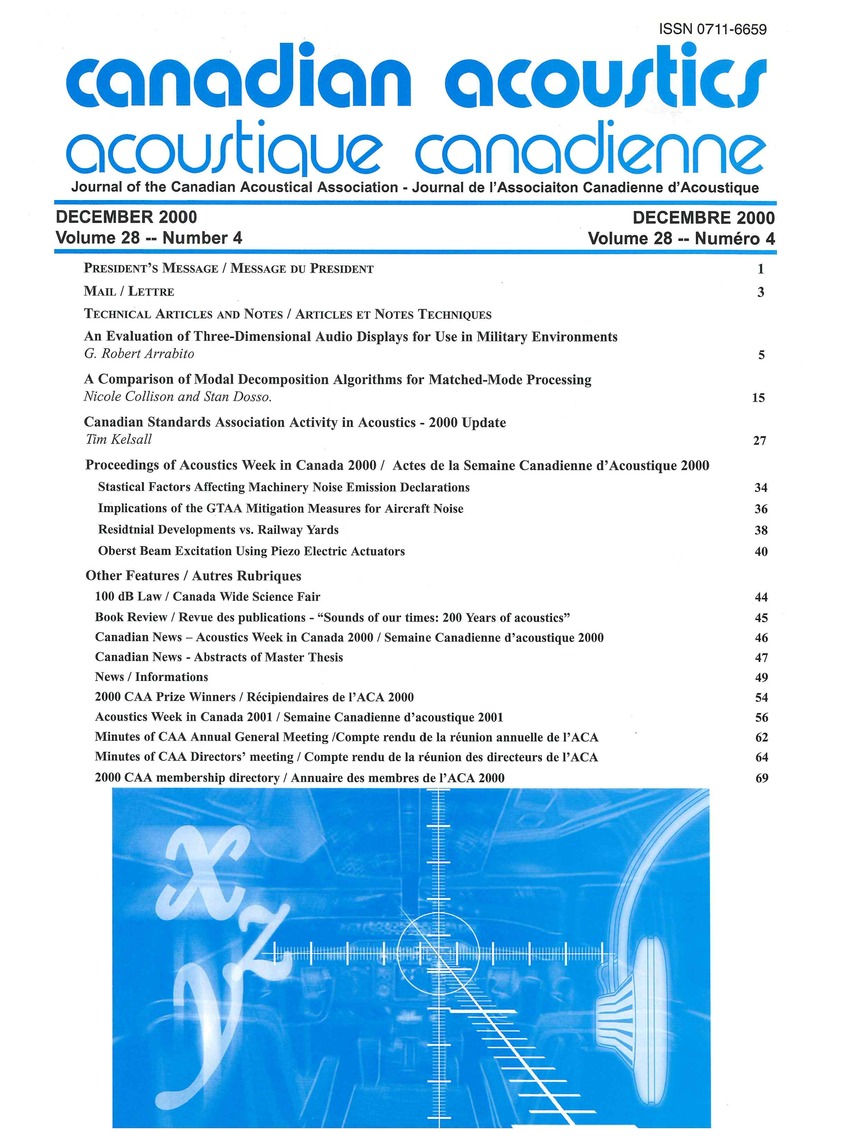Residential Development vs. Railway Yards
Mots-clés :
acoustic noise, rail yardRésumé
A rail yard is comprised of many noise sources. Unlike a highway a rail yard does not generally emit a constant hum but rather produces separate and distinct sounds. A rail yard can have extended periods of time where no activity and consequently no sounds are evident. In the case of a complaint a rail yard is not subject to provincial noise guidelines nor to any municipal noise by-laws. In fact, most noise by-laws provide exemptions for the railways. Rail yards are federally regulated by the Canadian Transportation Act, which is administered by the Canadian Transportation Agency (CTA). While the CTA can and does enforce the act, the rail activities of the rail operators are not regulated by specific numerical limits. Rail operators are permitted to expand their activities within their boundaries without requiring any approvals. Despite this seemingly “untouchable” existence, rail yard activities are the subject of complaints and as a result of this the CTA has imposed restrictions on rail activities on a case by case basis. In the case of existing residences adjacent to rail yards, often the only mitigation is relocation of the activities and/or curtailment of the activities. Due to the nature of the operation it is often very difficult (if not impossible) and costly to curtail and/or alter the rail operations. For this reason permitting new residential development adjacent to rail yards is short sighted and may result in catastrophic consequences. As a result of many hours of sound level measurements made within rail yards and at adjacent receptors and observations of rail yard activities, we have gained a better understanding of the nature of rail yards as well as the sound levels associated with each of the activities. Understanding the operations that take place within a rail yard is important to assisting the planners, engineers and municipalities in developing comprehensive plans that do not expose residential receptors to the wide range of noises and do not expose the railways to controls that are not always practicable nor feasible. The discussion that follows provides a brief description of each of the sources, provides the sound levels of the different types of activities that take place within a rail yard and explores some mitigation options.Fichiers supplémentaires
Publié-e
Comment citer
Numéro
Rubrique
Licence
Author Licensing Addendum
This Licensing Addendum ("Addendum") is entered into between the undersigned Author(s) and Canadian Acoustics journal published by the Canadian Acoustical Association (hereinafter referred to as the "Publisher"). The Author(s) and the Publisher agree as follows:
-
Retained Rights: The Author(s) retain(s) the following rights:
- The right to reproduce, distribute, and publicly display the Work on the Author's personal website or the website of the Author's institution.
- The right to use the Work in the Author's teaching activities and presentations.
- The right to include the Work in a compilation for the Author's personal use, not for sale.
-
Grant of License: The Author(s) grant(s) to the Publisher a worldwide exclusive license to publish, reproduce, distribute, and display the Work in Canadian Acoustics and any other formats and media deemed appropriate by the Publisher.
-
Attribution: The Publisher agrees to include proper attribution to the Author(s) in all publications and reproductions of the Work.
-
No Conflict: This Addendum is intended to be in harmony with, and not in conflict with, the terms and conditions of the original agreement entered into between the Author(s) and the Publisher.
-
Copyright Clause: Copyright on articles is held by the Author(s). The corresponding Author has the right to grant on behalf of all Authors and does grant on behalf of all Authors, a worldwide exclusive license to the Publisher and its licensees in perpetuity, in all forms, formats, and media (whether known now or created in the future), including but not limited to the rights to publish, reproduce, distribute, display, store, translate, create adaptations, reprints, include within collections, and create summaries, extracts, and/or abstracts of the Contribution.


